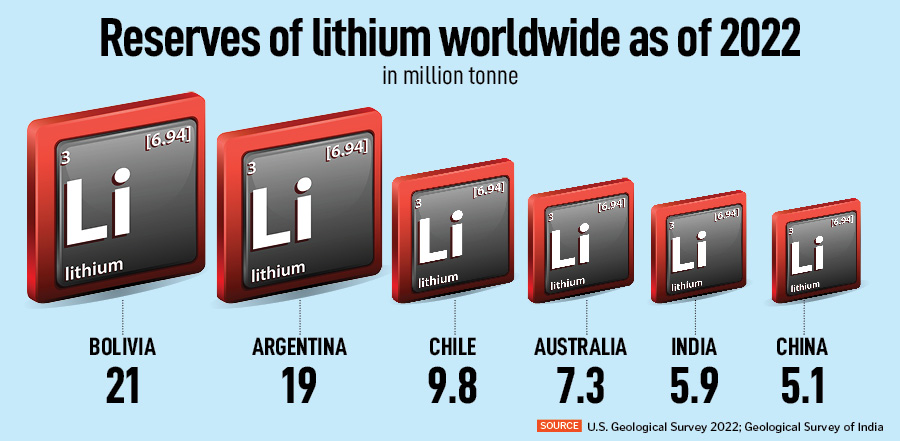
India has lifted the ban on lithium mining. Why?
Lithium-ion batteries are majorly used in EVs. With the recently discovered lithium resources, India could be looking at a massive opportunity, but experts say environmental concerns must be kept in mind
 A lithium mining machine moves a salt by-product at the mine in the Atacama Desert in Salar de Atacama, Chili; Image: Lucas Aguayo Araos/Anadolu Agency via Getty Images
A lithium mining machine moves a salt by-product at the mine in the Atacama Desert in Salar de Atacama, Chili; Image: Lucas Aguayo Araos/Anadolu Agency via Getty Images

“China controls the bulk of the global supply of batteries not only because it is able to produce raw materials, but also because it is able to manufacture cells at scale,” says Ronak Pol, team lead, strategy, Foundation for Economic Development (FED). With the newly discovered lithium in India—valued at Rs34 trillion—India is sitting on a massive opportunity. He adds, “The real opportunity here is for India to competitively tap the $300 billion+ global EV market that is growing rapidly. There is a lot of price sensitivity around lithium-ion cells, given the increasing demand, but if India can scale up production fast enough, it can compete with China and South Korea to supply lithium-ion batteries to the world.”Also read: 5 myths about lithium-ion you should know
Environmental Concerns
Though lithium’s main use is for renewable energy sources such as electric cars and solar panels, the extraction methods for minerals such as lithium can be energy intensive. Experts reckon that it could lead to air and water pollution, land degradation and groundwater contamination.As per a report by Earth.org, “It is important to note that fossil fuel mining, including lithium and cobalt mining, is estimated to be responsible for the emission of around 34 billion tonnes of carbon dioxide equivalent (CO2e) worldwide annually. About 45 percent of it is from coal, 35 percent from oil, and 20 percent from gas.” However, of this, the carbon emitted from lithium mining is significantly lesser than fossil fuels. The report adds that it is estimated to be around 1.3+ million tonnes of carbon annually, with every tonne of mined lithium equating to 15 tonnes of CO2 into the air.Additionally, the production of lithium through evaporation ponds uses a lot of water—around 21 million litres per day. Approximately 2.2 million litres of water is needed to produce one tonne of lithium, according to the euronews.green’s news report. For instance, in Chile—which has one of the largest lithium reserve in the world—over the years, lithium “mining consumes, contaminates and diverts scarce water resources away from local communities”, adds the report.While the government has lifted the ban on mining lithium, experts reckon these environmental concerns must be factored in.Post Your Comment


















